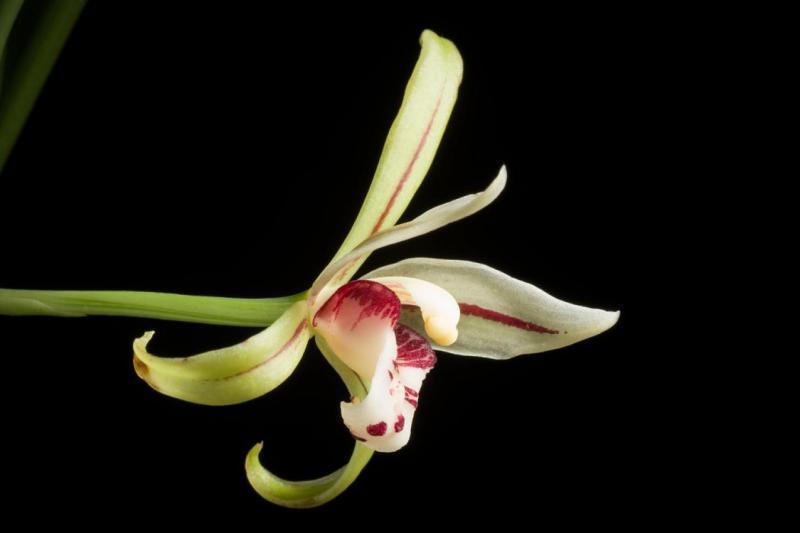Cymbidium lancifolium
Also known as: The Lance or Cymbidium nagifolium h.v. Masamune Cymbidium caulescens Cymbidium kerrii Cymbidium cuspidatum Cymbidium lancifolium h.v. lancifolium Cymbidium maclehoseae Cymbidium papuanum Cymbidium lancifolium var. papuanum Cymbidium nagifolium f. conforme Cymbidium gibsonii Cymbidium syunitianum Cymbidium javanicum var. pantlingii Cymbidium javanicum var. aspidistrifolium Cymbidium lancifolium f. aspidistrifolium Cymbidium lancifolium var. syunitianum Cymbidium nagifolium Cymbidium javanicum Cymbidium aspidistrifolium Cymbidium lancifolium var. aspidistrifolium Cymbidium multiradicatum Cymbidium rhizomatosum in the subfamily: Epidendroideae
Native to: China Hong Kong India Indonesia Japan Nepal Sabah - Malaysia Thailand
General Information
The Lance is a cool to warm growing epiphytic, lithophytic or terrestrial orchid belonging to the sub family Epidendroideae native to China, Hong Kong, India, Indonesia, Japan, Nepal, Malaysia, and Thailand.
Plant Description
Each new growth has numerous erect elliptic leaves that grow to 9-50cm long. Pseudobulbs grow to 3-15cm. The plant has a climbing growth habit
Substrate(s)
- Coarse
- Medium
- Small
- Fine
- Bark
- Charcoal
- Treefern
- Spaghnum Moss
- Perlite
- Sand
Care Notes
These orchids like to be kept on the dry side, but may need to be watered daily during warm weather, and prefer a well draining mix or also do well mounted, provided they can be watered regularly.
These are quite a forgiving orchid, there are no special requirements to get this orchid to flower, just good care and consistent conditions. Larger plants may be more fussy and can react poorly to change; a poorly timed repotting, a pest infection or an unusually hot day can set them back for a couple of years. However, even plants that have been treated poorly can thrive, and if they are set back they often recover much stronger then they would otherwise be.
Climate
Grows at low to high elevations. Rainfall ranges from 74mm to 224mm per day, heaviest in June and lightest in December. Humidity ranges from 82% to 86%, highest in February and lowest in July. Temperature ranges from 9C to 31C, highest in July (22C to 31C) and lowest in January (9C to 17C).
Fertiliser
These plants thrive on fertiliser, especially during periods of growth. Liquid fertiliser can be applied year round at the recommended strength, augmented with manure pellets or other quickly degradable fertiliser, applied away from the base of the plant, during periods of strong growth. Slow release pellets can also be applied year round at the rate of 2-3 pellets per cup (250ml) of media.
They can benefit from a high phosphate fertiliser leading up to flowering season, and by a high nitrogen fertiliser when new growth appears.
Use balanced fertiliser year round. Be sure to flush out excess fertiliser by running water through the media regularly year round. Fertiliser can be applied heavily year round. Use a low Nitrogen fertiliser during Summer and Winter. Use a high Phosphorous fertiliser during Summer and Winter.Potting
This orchid prefers a fine, well draining media. Avoid commercial potting mixes as they may have 'wetting agents' that retain water for too long. A simple mix made up of 20% sand, 50% peat or moss, with the remaining 30% made up of decomposed bark and leaf litter would be adequate. Adding some charcoal to the mix will also help it last longer.
Repotting depends on how wet the media is usually. Every 2-3 years would suffice, or whenever the media shows signs of clumping, staying wet for too long, or smells foul.





















